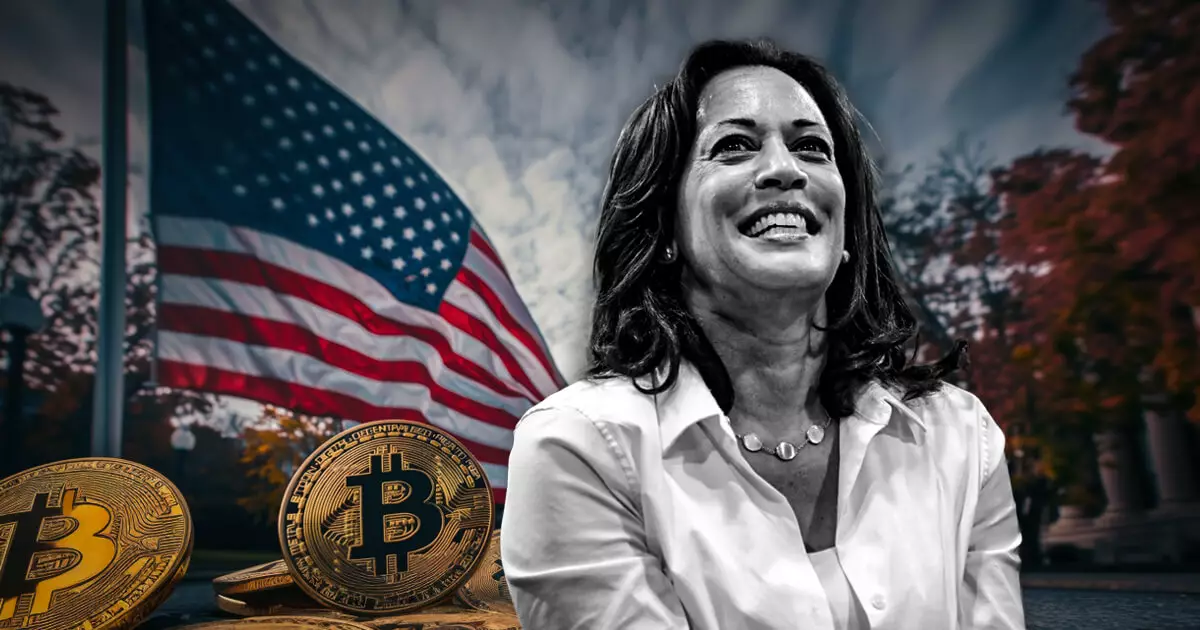The landscape of cryptocurrency regulation in the United States is continually evolving, significantly influenced by shifts in political leadership. As the 2024 presidential election approaches, the positions of various candidates on cryptocurrency are expected to play a crucial role in shaping future regulations. Recent analysis by Alex Thorn, head of research at Galaxy Digital, sheds light on these dynamics, providing a scorecard that evaluates the impact of the candidates on the crypto industry, particularly focusing on Vice President Kamala Harris and former President Donald Trump. This article delves into the nuances of their policies, illuminating how their potential presidencies could affect the cryptocurrency market.
The crypto industry is a fertile ground for speculation, but it is also fraught with regulatory challenges. As highlighted by Thorn, the contrasting views held by Harris and Trump reveal significant implications for the cryptocurrency sector. On one hand, Harris is portrayed as potentially less detrimental compared to the current administration of President Joe Biden, albeit still exhibiting conventional hesitations toward digital assets. On the other hand, Trump’s approach seems more overtly supportive, focusing on clarity and growth opportunities within the crypto space.
While Harris’s victory may not usher in sweeping changes for the crypto community, it is expected to be an improvement over the Biden administration’s policies. Thorn’s assessment suggests that an administration led by Harris could introduce milder regulatory stances while addressing some of the industry’s concerns, particularly regarding access to banking services. Conversely, Trump’s historical affinity towards crypto positions him as a catalyst for more robust legislative frameworks that may accelerate innovation.
One of the most striking distinctions between Harris and Trump emerges in their positions on taxation and mining regulations. Harris’s campaign rhetoric exhibits a stark aversion to tax cuts, specifically those aimed at wealthier individuals, raising concerns among crypto advocates who often favor tax incentives for budding technologies. In contrast, Trump is perceived as a strong proponent of measures that would promote tax clarity for digital assets. His historical actions reveal a commitment to fostering an environment conducive to investment in the crypto sector, unlike Harris’s more cautious trajectory.
In relation to Bitcoin mining, Harris’s position translates to moderately better conditions than those under Biden, yet it remains hostile overall. Trump’s broader acceptance of Bitcoin mining—viewing it as integral to domestic manufacturing—presents a favorable outlook for miners, suggesting that his governance would likely prioritize the growth of this segment of the industry.
Banking access remains a pivotal talking point in crypto regulation, and here, Harris and Trump represent two markedly different philosophies. Reports indicate that Harris may revisit some aspects of the Biden administration’s “Operation Chokepoint 2.0,” aimed at curbing cryptocurrency’s integration with traditional banking systems. While her intentions appear somewhat accommodating, Trump’s approach seems resolutely in favor of dismantling obstacles that currently impede banks from engaging with blockchain technologies.
Trump’s vocal opposition to a central bank digital currency (CBDC) further amplifies his stance as protective of decentralized finance systems, a position likely to resonate well with crypto enthusiasts. Conversely, the implications of Harris’s policies could present hurdles for national banks looking to explore blockchain innovations.
Interestingly, Bitcoin’s regulatory future appears relatively stable, regardless of which candidate wins. Thorn notes that Bitcoin is not a focal point in the varying policies, suggesting a continuity for its status in the market. However, the landscape for altcoins faces unpredictability. A Trump presidency might pave the way for clarifying regulations that could drive the growth of altcoins, possibly leading to enhanced market performance. In contrast, a victory for Harris might pose considerable risks to these alternative tokens.
Potential beneficiaries of a Trump presidency could include tokens like Uniswap’s UNI, which stand to thrive under a clearer regulatory framework. Conversely, the challenges presented under a Harris administration could introduce complexities and regulatory hurdles that may stifle innovation within the altcoin landscape.
As the electoral race unfolds, it is essential for stakeholders in the crypto industry to closely monitor the policy positions being highlighted by candidates. Both Kamala Harris and Donald Trump present unique opportunities and challenges for the future of cryptocurrencies in the United States. Thorn’s scorecard not only helps illuminate these positions but also offers crucial insight into how different political landscapes might shape the regulatory framework surrounding this ever-evolving market. Ultimately, understanding these political stances will be paramount for investors, developers, and enthusiasts as they navigate the road ahead in the cryptocurrency world.

